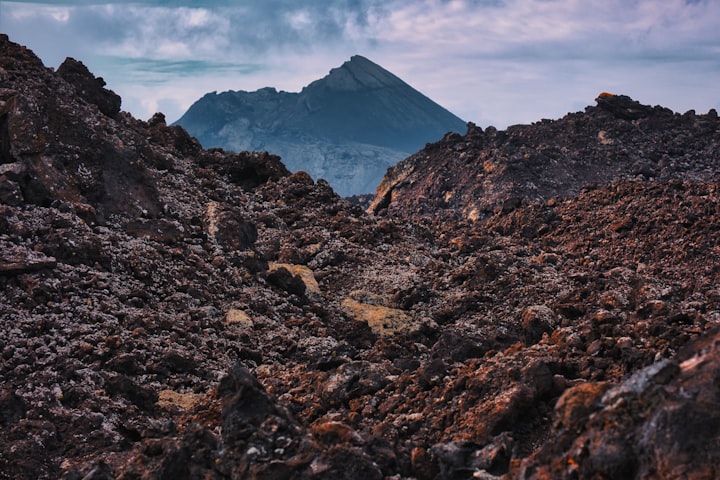
Introduction
For centuries, mountain ranges have stood as formidable symbols of nature's majesty and resilience, evoking a sense of wonder and reverence among humans. However, the serene beauty of these elevated landscapes is increasingly marred by a growing environmental challenge: the accumulation of trash. From remote peaks to popular trails, mountains worldwide are grappling with the alarming issue of trash, and its implications extend far beyond the surface. This article delves deep into the multifaceted problem of trash on mountains, exploring its origins, unraveling its ecological consequences, and proposing holistic solutions to combat this escalating concern.
The Rise of Mountain Trash
1. Tourism and Recreation: The allure of mountains as outdoor playgrounds has led to a surge in recreational activities like hiking, climbing, and camping. While this surge brings economic benefits, it also carries a downside—increased waste generation. As tourists flock to mountains, they inadvertently leave behind traces of their presence in the form of litter, packaging, and discarded gear.
2. Unregulated Waste Disposal: The unique topography of mountains, often characterized by rugged terrain and limited infrastructure, poses challenges for waste management. Inaccessible areas, coupled with inadequate waste disposal facilities, contribute to the problem of trash accumulation on mountains.
Environmental Consequences
1. Ecosystem Disruption: The intrusion of human-generated waste disrupts the fragile ecosystems of mountains. Discarded materials can directly harm wildlife through ingestion or entanglement, leading to injury or even death. This disruption further cascades through the food chain, impacting predator-prey relationships and ecosystem balance.
2. Water Contamination: Among the most insidious consequences of mountain trash is water contamination. Plastics and other non-biodegradable materials degrade over time into microplastics, which can leach harmful chemicals and infiltrate water bodies. This contamination not only jeopardizes aquatic life but also affects the health of organisms higher up the food chain, including humans.
3. Soil Degradation: The presence of trash can lead to soil degradation, affecting nutrient cycles and impacting plant growth. In mountain ecosystems already grappling with thin and fragile soils, the introduction of foreign materials can disrupt the intricate balance that sustains life.
Aesthetic Damage
1. Visual Pollution: Mountains are celebrated for their breathtaking vistas, offering a respite from the urban landscape. However, the presence of trash on mountains creates a jarring dissonance, detracting from their natural beauty and diminishing the immersive experience for visitors.
2. Cultural Significance: Many mountains hold profound cultural, spiritual, or religious significance for local communities. The accumulation of trash in these revered spaces not only desecrates these sites but also undermines the cultural heritage and traditions tied to them.
Global Examples
1. Mount Everest: Perhaps one of the most egregious examples, Mount Everest has gained notoriety as the "world's highest garbage dump." The combination of a significant number of climbers, inadequate waste management infrastructure, and the revelation of decades-old trash due to melting glaciers paints a grim picture of the trash problem on this iconic peak.
2. Hiking Trails: Popular hiking trails around the globe, including the famous Appalachian Trail in the United States and the historic Inca Trail in Peru, face similar challenges. The influx of hikers, coupled with insufficient waste management systems, results in the gradual degradation of these natural wonders.
Solutions and Mitigation Strategies
1. Educational Campaigns: Raising awareness about the detrimental effects of mountain trash is a vital step towards behavior change. Tourists, hikers, and local communities must be educated about the importance of responsible waste management to foster a culture of accountability.
2. Leave No Trace Principles: Promoting and adhering to Leave No Trace principles is essential in minimizing the impact of outdoor activities. These principles emphasize practices that limit human interference, such as carrying out all waste and minimizing campfire impact.
3. Waste Management Infrastructure: Developing appropriate waste collection and disposal systems on mountains is crucial. Designated collection points, recycling facilities, and waste transportation mechanisms can significantly mitigate trash accumulation.
4. Policy and Regulation: Governments and local authorities play a pivotal role in addressing the issue of mountain trash through the implementation and enforcement of regulations that govern waste disposal practices.
Community Engagement
1. Local Involvement: Engaging local communities living near or within mountain areas is essential. Involving them in clean-up efforts, waste management initiatives, and conservation projects can create a sense of ownership and responsibility.
2. Collaboration with Tourism Industry: Collaboration between various stakeholders in the tourism industry, such as tour operators, guides, and accommodation providers, is crucial. Encouraging responsible practices and sustainable tourism can significantly mitigate the problem of trash on mountains.
Conclusion
Mountains, with their rugged grandeur and timeless allure, deserve to be preserved as natural treasures for future generations. The issue of trash on the mountains is an urgent call to action—a reminder that our actions have far-reaching consequences. By understanding the origins and implications of mountain trash and embracing comprehensive solutions, we can collectively ensure that these towering landscapes remain unspoiled havens of biodiversity and beauty. The challenge of combating mountain trash is a shared responsibility that transcends borders and cultures, and our commitment to preserving these awe-inspiring heights will determine the legacy we leave for the Earth and those who come after us.
About the Creator
Reader insights
Outstanding
Excellent work. Looking forward to reading more!
Top insight
On-point and relevant
Writing reflected the title & theme






Comments
There are no comments for this story
Be the first to respond and start the conversation.